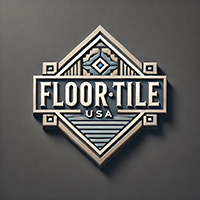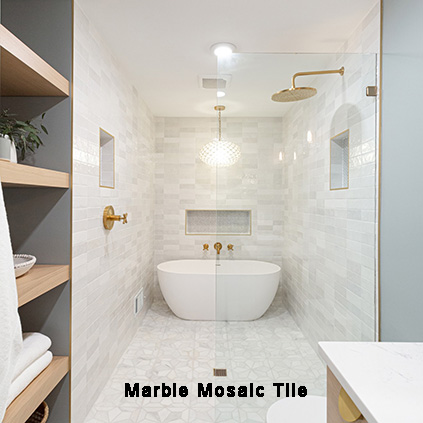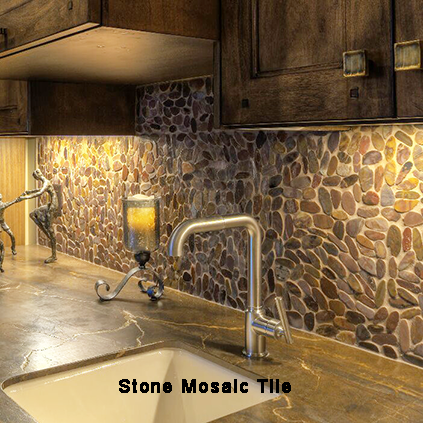
FloorTileUSA.com
Your Source for Stone Mosaic Tile
The beauty and timelessness of Stone Mosaic Tile.....⇒CLICK HERE TO CHECK OUT THE SELECTION
Tile Definitions
| Porcelain Tile | Porcelain tile is a finished product composed of greyish clay, feldspar, silica sand and talc. Porcelain tile contains more feldspar than ceramic tile and is fired in a kiln to temperatures exceeding 2300 degrees F. It too can be unglazed or glazed. The higher firing temperatures give the clay body a greater resistance to freeze-thaw effects because the clay body does not absorb moisture as much as the ceramic body. In fact, Porcelain tile has a moisture absorption of no more than 0.5%, whereas a red-body ceramic tile has a moisture absorption of about 4%. |
| Glass Tile | Glass tile can be as small as 1/4"x1/4" and as large as 4"x16" and even larger. It can be integrally colored or have a painted backing to give it color and a textural look. |
| Marble | Marble is a metamorphic (or changed) rock composed of recrystallized carbonate minerals, most commonly calcite or dolomite. In other words, marble refers to limestone that has been changed through geologic processes such as temperature and the intrusion of minerals that give it veining, etc. Marble is fairly porous, thus it should be sealed after installation. Marble is an excellent choice for interior use. |
| Travertine | Travertine is a mineral consisting of layered calcium carbonate (calcite) deposits formed near springs (especially hot springs). It is more like a limestone than a marble. Colors range from warm, earthy tones, soft ivories and creams, deep mocha browns, shades of gold, , reds, and silvery greens. Travertine is never solid in color due to its veins or bands of minerals that run throughout the stone. Therefore, no two stones or tiles are alike. Travertine tends to have holes within the stone caused by the evasion of carbon dioxide gas. Travertine tile is excellent for interior use and is often used outside in the form of pavers. |
| Slate | Slate is a fine-grained metamorphic (or changed) rock that splits into thin, smooth-surfaced layers. Slate is created by the alteration of shale or mudstone by low-grade regional metamorphism which is the changing of rock as a result of pressure and heat. It is popular for a wide variety of uses especially flooring because of its durability and attractive appearance. Slate can be used both indoorsas well as outdoors. |
| Quartzite | Quartzite is a metamorphic (or changed) rock composed almost entirely of quartz. It forms when quartz-rich sandstone is altered by heat, pressure, and chemical processes. These conditions recrystallize the sand grains and the silica cement that binds them together resulting in a rock of incredible strength. Quartzite can be used both indoors and outdoors. |


